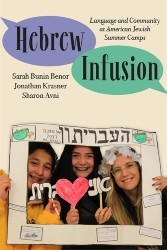In How to Pack for the End of the World, Amina is starting out at her new boarding school, Gardner Academy, where her parents sent her with hopes that she’d stop having nightmares and stop obsessing over conspiracy theories. Growing up Jewish, Amina had never really cared much for religion until someone attempted to burn down her synagogue only thirty minutes after her mom had left the building. Amina threw herself into Judaism and incessantly researched fascism and conspiracy theories, fearing they could lead to a further rise in antisemitism. At Gardner, she finds herself forming a club with other new students about preparing for the end of the world and how to live on in case of mass destruction.
Readers will find Falkoff’s characters effortlessly relatable. Amina suffers from a traumatic event and tries hard to move on. Hunter doesn’t like or trust his dad, who runs a massive oil company. Jo is filled with mystery. Wyatt comes from a commune, where he and his family lived completely off the grid until his parents split up. Chloe prides herself on her successful fashion blog. While each of these characters is markedly different, each of them cares about the kinds of global issues which could potentially lead to the end of the world as we know it. Through playing games with each other to mimic apocalyptic scenarios, each of them starts to lose sight of the bigger picture, which is protecting the world as it is today and fighting for improvement and progress.
Jewish values are pervasive throughout the story, particularly those which relate to repairing the world. The disparate pieces of the plot subtly come together as each of the characters grows and matures. They all begin to make peace with the world in which they live and the sense of closure feels satisfying and reassuring.
Elizabeth Slotnick works in the technology space but has a growing presence on bookstagram, where she reviews books spanning across all genres. She graduated from the University of Virginia and lives in Seattle, WA.





